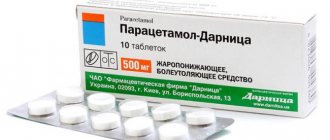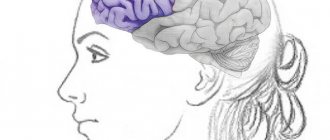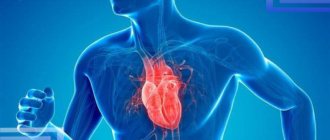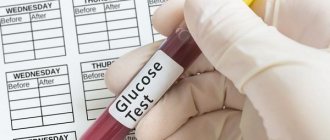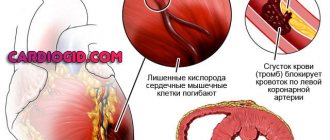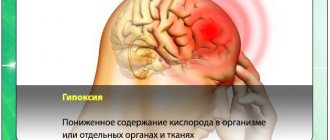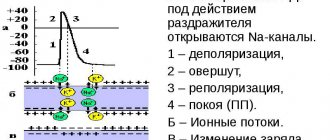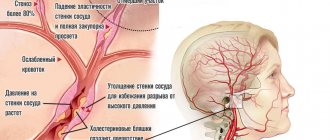X-ray image of a patient with osteochondrosis.
Cervical osteochondrosis is often accompanied by signs of vegetative-vascular dystonia. These are paroxysmal or constant rapid heartbeat, increased sweating, dizziness, and fainting. The intensity of the symptoms of VSD and the nature of the course of cervical osteochondrosis are interrelated. During relapses of degenerative-dystrophic pathology, the severity of functional disorders increases significantly.
The relationship between VSD and cervical osteochondrosis
Vegetative-vascular dystonia is not an independent disease, but a set of symptoms that accompany the course of any systemic pathology. This term refers to a disorder in the regulation of homeostasis by the autonomic nervous system, expressed in changes in blood pressure, heart rate, heat transfer, and the functioning of internal organs.
VSD also occurs with cervical osteochondrosis against the background of compaction and flattening of the intervertebral discs, instability of the vertebral bodies, weakening of the muscles and ligamentous-tendon apparatus. There is a gradual involvement in the destructive process of vascular and nerve trunks localized in the area of damaged vertebral structures.
Sleep disturbances are a common sign of osteochondrosis.
The spinal roots are irritated and injured when they are pinched:
- bone growth (osteophyte);
- displaced disk;
- muscle spasm;
- inflammatory edema.
Irritation of sensitive nerve endings leads to spasm of the arteries, insufficient blood supply to the brain with oxygen and nutrients. Neuronal ischemia provokes a disruption in the production of hormones - biologically active substances that regulate the functioning of the peripheral nervous system. This becomes the reason for the disruption of its work and the appearance of symptoms of vegetative-vascular dystonia.
Treatment at the Energy of Health clinic
Doctors at the Health Energy clinic choose an integrated approach to the treatment of vegetative-vascular dystonia. After a thorough diagnosis and exclusion of other pathologies, combination therapy will be prescribed, including:
- modern medications if necessary (the choice depends on the severity of symptoms);
- physiotherapy, massage and physical therapy to strengthen the body in general and the nervous system in particular;
- acupuncture, manual therapy if indicated.
We will certainly discuss your lifestyle, tell you about ways to correct it, and help you create the right diet. Regular monitoring by our doctors will help keep the disease under control.
Reasons for appearance
One of the main reasons for the development of cervical osteochondrosis is the natural aging of the body, accompanied by a slowdown in recovery processes. Systemic diseases, for example, gout, deforming osteoarthritis, rheumatoid arthritis, can provoke the destruction of intervertebral discs. Osteochondrosis develops against the background of a sedentary lifestyle, excessive physical activity, endocrine and metabolic disorders, congenital or acquired skeletal abnormalities. And the prerequisites for the appearance of characteristic symptoms of VSD are the following factors:
- frequent stressful situations;
- changes in hormonal levels;
- drinking alcohol, coffee;
- deficiency of microelements, water- and fat-soluble vitamins in food;
- sudden change in weather;
- respiratory, gastrointestinal infections;
- injuries.
Excessive mental stress leads to VSD.
The likelihood of functional disorders increases in people with certain personality and character traits. As a rule, they tend to experience ordinary everyday conflicts acutely. Such people initially have increased anxiety and suspiciousness.
Advantages of the clinic
The Health Energy Clinic offers each patient the highest quality medical services at an affordable price. By contacting us, you will receive:
- consultations with experienced doctors of various profiles;
- full diagnostics to identify obvious and hidden pathologies;
- a modern and effective complex treatment scheme, selected in accordance with the characteristics of your body.
Our clinic has its own day hospital, where you can undergo various therapeutic and diagnostic procedures in accordance with the doctor’s prescription. Convenient parking and location next to the metro allows you to get to us with maximum comfort.
Vegetative-vascular dystonia can be a serious problem that interferes with a full life. Do not submit to the disease, sign up for the Energy of Health clinic.
Clinical picture
Vegetative-vascular dystonia is characterized by a variety of clinical manifestations. Their large number is due to the disorder of all basic vegetative functions - breathing, blood supply, sweating, urination, digestion, peristalsis. In most cases, symptoms of VSD occur with cervical osteochondrosis of grade 2, 3, when changes in the vertebrae and discs have become irreversible. Often, complications of the disease—protrusions, hernial protrusions, discogenic myelopathy—lead to functional disorders.
Cardiac symptoms
Most often, VSD is clinically manifested by tachycardia - an arrhythmia characterized by a heart rate of more than 90 beats per minute. There are sensations of interruptions in the functioning of the heart, its freezing, vascular pulsation not only in the back of the neck, but also in the legs and arms.
One of the leading symptoms of VSD is pain in the cardiac region. It can be acute, but more often it is dull, aching, pressing. Diadynamic functional disorders are also noted. Blood pressure increases or decreases, blood and lymph circulation is disrupted.
Pain in the heart area.
Respiratory system
Vegetative-vascular dystonia is characterized by respiratory symptoms that occur against the background of dysregulation of the respiratory system. Tachypnea (rapid breathing), sensations of lack of air, heaviness, congestion in the chest, and severe shortness of breath, which resembles an attack of bronchial asthma, are observed. A patient with cervical osteochondrosis has difficulty in fully inhaling and exhaling.
Nervous system
The psychoneurological symptoms of VSD are so pronounced that they often lead to panic attacks - sudden attacks of unmotivated fear, increased anxiety, and restlessness. In severe cases, patients are diagnosed with depression. Vegetative-vascular dystonia is manifested by lethargy, weakness, and rapid fatigue with minor exertion.
Patients become irritable, tearful, and mental and physical performance decreases against the background of psycho-emotional instability. Gradually, they develop weather dependence, often experience headaches, and experience a disorder in the change of phases of sleep - it becomes superficial and restless.
Panic attacks, irritability, tearfulness are symptoms of pathology.
Other symptoms
A disorder of the autonomic system makes undesirable adjustments to the functioning of almost all human life systems. Symptoms of VSD rarely appear in isolation. More often they are combined with each other, which significantly worsens the patient’s well-being and complicates diagnosis.
| Autonomic disorders | Characteristic signs |
| Thermoregulation disorders | Body temperature is labile - it rises during the day to 38 °C, and then decreases to 35 °C. The patient feels chilly, and then suffers from fever and excessive sweating. Thermoregulatory disturbances may occur from time to time or become permanent |
| Digestive and peristaltic disorders | They manifest themselves as dyspeptic, dyspeptic disorders - attacks of nausea and vomiting, belching, pain in the epigastric region, increased gas formation. Constipation or diarrhea is common |
| Genitourinary disorders | Sexual desire persists against the background of anorgasmia. In the absence of any pathologies of the urinary tract, the urge to empty the bladder becomes more frequent and urination becomes painful |
Symptoms of VSD
Vegetative-vascular dystonia is a disease of the human nervous (or, in medical terms, autonomic) system. It is formed due to incorrect transmission of neurological impulses and, as a result, an incorrect reaction of vascular tissue to loads and stress. In this case, either the vessels are constantly in a tense state (this is VSD of the hypertonic type with an increase in pressure), or the walls of the vessels are constantly relaxed (this is VSD of the hypotonic type with a decrease in pressure). As a result, a person develops and experiences:
- Fatigue quickly, low fatigue threshold.
- Periodic fluctuations in blood pressure, its increase or decrease after physical or mental stress, as well as for no apparent reason.
- Headache.
- Sleep disorder.
- Panic attacks, fears, depression.
Important: VSD is a separate disease only in the post-Soviet space. In European countries, vascular dystonia is a syndrome (sign) of other diseases. For example, neurological disorders or osteochondrosis of the neck.
Diagnostics
It is very difficult to identify VSD due to the large number and variety of symptoms. Therefore, its diagnosis consists of differentiating pathologies with a similar clinical picture. Patients must be referred for consultation to a neurologist, cardiologist, or endocrinologist. Characteristic signs of cervical osteochondrosis are detected using x-ray examination.
Osteochondrosis of the cervical spine on x-ray.
Family history is of no small importance when making a diagnosis. The development of VSD in a patient with parasympathicotonia is suggested by the presence of bronchial asthma, ulcerative lesions of the gastrointestinal tract, and neurodermatitis in close relatives. If sympathicotonia is suspected, indirect confirmation of the diagnosis is the identification of hypertension, coronary heart disease, hyperthyroidism, and diabetes mellitus in family members.
When conducting diagnostics, the initial autonomic tone and indicators of autonomic reactivity are assessed. To do this, patients' complaints are analyzed, the results of an electrocardiogram and electroencephalography of the brain are studied.
What to do when you have a panic attack
During an attack, it is not informative to measure blood pressure or heart rate, since during a panic attack they are far from normal. You should lie down and take a comfortable body position. Doctors recommend smiling despite fear. There is a connection between the facial muscles and the brain, so your health will soon improve.
It is recommended to use deep breathing techniques. You need to hold the air for a couple of seconds, and then exhale smoothly, slowly. You also need to squeeze the “anatomical snuff box” for one minute. This is the name of the hole that forms at the base of the thumb of the left hand when it is raised.
"Anatomical snuff box".
Treatment of pathologies
It is impossible to eliminate the manifestations of vegetative-vascular dystonia without treatment for cervical osteochondrosis. All its symptoms will weaken or completely disappear at the stage of stable remission of the degenerative disease.
Drug treatment
In the treatment of cervical osteochondrosis directly, drugs of various clinical and pharmacological groups are used. These are non-steroidal anti-inflammatory drugs, muscle relaxants, glucocorticosteroids, B vitamins, ointments with a warming and local irritant effect.
Nonsteroidal anti-inflammatory drugs for spinal pathologies.
To eliminate functional disorders, patients are prescribed antidepressants, tranquilizers, and sedatives. A course of taking Glycine, Hopatenic and Glutamic acids, balanced complexes of vitamins and microelements can reduce the likelihood of panic attacks.
With pronounced manifestations of functional disorders, beta-blockers, psychostimulants, and antipsychotics are included in the therapeutic regimen.
Massage
In the treatment of cervical osteochondrosis, classic, acupressure, and cupping massage is used. Under mechanical influence, skeletal muscles relax, pinching of the vertebral artery and spinal roots is eliminated. Massage is an effective method not only for the treatment of osteochondrosis, but also for the prevention of its relapses.
Massage of the cervical-collar area.
Physiotherapy
Physiotherapeutic methods used in the treatment of cervical osteochondrosis also help get rid of the manifestations of VSD. Patients are prescribed magnetic therapy, laser therapy, UHF therapy, galvanic currents, and shock wave therapy. Neck pain caused by pinched spinal roots is treated well with applications of ozokerite and paraffin. And to normalize the psycho-emotional state and strengthen the body’s defenses, therapy with therapeutic mud and mineral waters is recommended for patients.
Acupuncture for osteochondrosis.
Neck exercises
Therapeutic gymnastics and physical exercise are the most effective way to get rid of all neurological symptoms of cervical osteochondrosis, including panic attacks. Most often, a physical therapy doctor includes the following exercises in the complex:
- stand up, spread your feet shoulder-width apart, rotate your head first in one direction, then in the other;
- in a sitting position, place your palm on your chin, try to tilt your head, while offering resistance with your hand;
- Sit up straight, place your palm on your cheek. Tilt your head to the side, resisting with your hand. Repeat the exercise in the opposite direction.
All movements must be performed without jerking, smoothly, slowly, with a small amplitude.
Psychological help
For individual psychological correction, patients are recommended to regularly visit a psychotherapist or psychologist, including group sessions. The doctor explains that you cannot allow yourself to give in to fear, anxiety, and worry. It is necessary to realize that the attack is provoked by another relapse of cervical osteochondrosis, and therefore is not a threat to life.
Traditional methods
Among the folk remedies in the treatment of cervical osteochondrosis and VSD, infusions of medicinal herbs with a mild sedative effect are used. To prepare them, pour a teaspoon of dry medicinal raw material with a glass of boiling water. After an hour, filter the infusion and take 100 ml up to 3 times a day. St. John's wort, motherwort, valerian, oregano, mint, lemon balm, and thyme have pronounced sedative activity.
Herbal collection.

